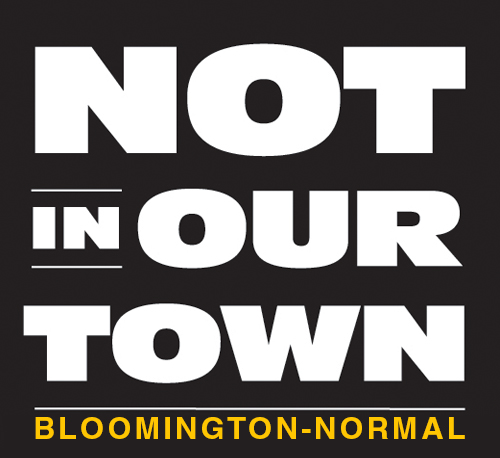Derek Beigh
The Pantagraph
BLOOMINGTON — When it comes to teaching children who speak languages other than English, Maura Toro-Morn thinks American schools have it all wrong.
"Schools see students who speak other languages as deficient," she said. "We need to see them not as deficient but as contributing something new."
Toro-Morn, director of Illinois State University's Latin-American and Latino Studies program, is one of the leading local voices pushing a new kind of language teaching: dual language immersion.
Immersion seeks to improve on two traditional language programs: foreign language teaching for English speakers that usually begins in middle or high school, and bilingual education that helps students who don't speak English learn the language but not necessarily the culture.
Dual language programs place students who speak fluent English and those who fluently speak another language — usually Spanish — into the same classroom.
Beth Hatt, an associate professor in ISU's College of Education, said that arrangement benefits both native English speakers and their new peers.
"Children who learn a second language in the early years develop advanced skills in communication and language ... denser gray matter in their brains, greater self-regulation skills, better literacy skills and a decreased propensity for developing dementia," she said. "Socially, evidence suggests bilingualism creates greater opportunities for employment ... and increased opportunities to develop cross-cultural understanding and relationships."
She added that students "who develop academic fluency in their native language typically develop stronger English skills than children in English only, ESL or bilingual programs because they are provided a more solid foundation. Additionally, children in the bilingual programs are typically segregated from their English-speaking peers. In dual language programs, they have opportunities to develop cross-cultural understanding and relationships as well."
The program also has economic benefits, both educators said. Graduates are more prepared for an increasingly global economy — "the future workforce of State Farm and Caterpillar requires a multilingual education," Toro-Morn said — and school districts can benefit, too.
"Dual language programs are typically less costly than the traditional bilingual and ESL programming," Hatt said. "Additionally, if dual language programs are high quality, the test scores of students will typically be higher than mono-lingual students, especially in reading and writing."
Bloomington-Normal schools, however, are cautious about jumping into dual language immersion. Some officials came away skeptical after an October summit on the topic at Illinois Wesleyan University.
“Right now, school funding is a limiting factor in looking at new programs,” said Cindy Helmers, assistant superintendent for curriculum and and instruction at Bloomington District 87. "We continue to look at the models and best practices that are out there."
Sandy Wilson, who holds the same position at McLean County Unit 5, said she doesn't "know that it’s realistic in the near future” to add a dual language program.
“It’s not a simple transition from what we have to dual immersion,” she said. "Funding, staffing, location, teacher certification, transportation ... you name it, we would have to consider it.”
Both District 87 and Normal-based Unit 5 host growing Spanish-to-English bilingual programs in addition to traditional pullout English-as-a-second-language instruction. Both have about a half-dozen bilingual staff members.
“Staffing of course is the biggest thing you have to look at (when considering dual language). That is where your largest amount of funding goes,” Helmers said. "Each year, the superintendent puts out hard-to-fill or specific needs that the district has, and it seems like bilingual teachers is always on that list.”
Added Wilson, “There’s not a large number of these teachers that the colleges are graduating” who are qualified to teach a dual language program. “It’s a small pool of candidates for a large need and a growing need."
Both Twin City districts have traditional foreign language instruction. At District 87, it starts at the junior high level, and at Unit 5 at the eighth grade level. Offerings range from mainstays, including Spanish and French, to recent additions such as Mandarin Chinese.
Toro-Morn said the variety of languages spoken within a school district can make choosing a language for an immersion program difficult. Unit 5 houses students who speak fluently in 48 different languages, including 50 or more students who speak each of the top 14 represented; District 87 counts 35 languages spoken by its students.
Should local districts become interested in starting a program, they'll find a growing Latino population that supports Spanish as the best choice, according to an ISU report.
Unit 5's Hispanic enrollment jumped from 5 percent in 2009 to 7 percent — to about 950 — in 2014; District 87's increased from 8 percent to 12 percent — to about 650.
"If there we no Latinos here, we should still be having this conversation," said Toro-Morn. "Opportunities for young people who are bilingual or trilingual will be much more."
Alex Cardona, a business analyst at State Farm and member of the local Hispanic group Conexiones Latinas de McLean County, closed October's summit by affirming “the need is out there” for a dual language program in Bloomington-Normal.
“We can’t find enough truly bilingual employees (at State Farm). It’s not only bilingual but also biliterate,” he said. “You can be bilingual, but if you’re not bicultural, it’s like eating food without flavor.”
Toro-Morn said "as a nation, historically we have been multilingual."
"It's time for us to own that, and it's time for educational institutions to reflect that," she said.









